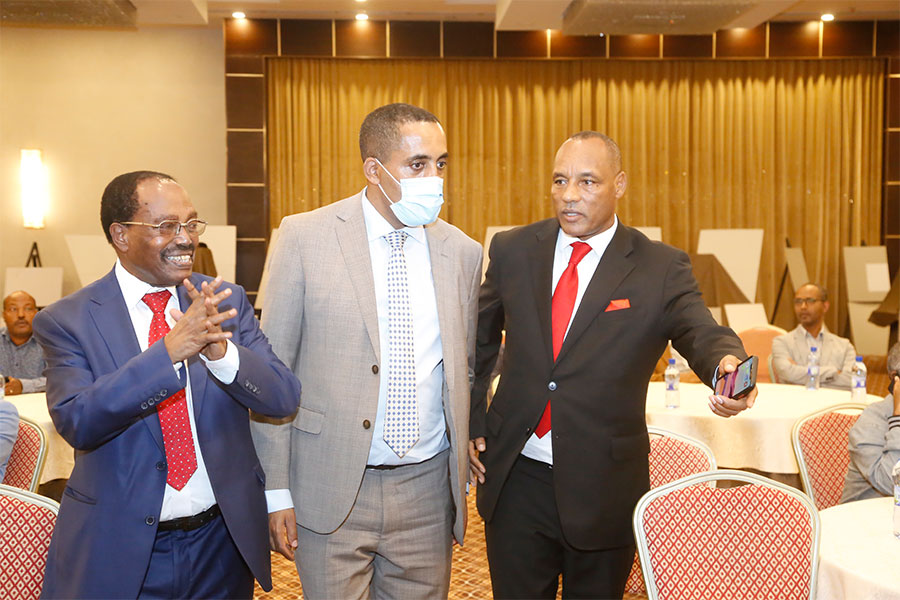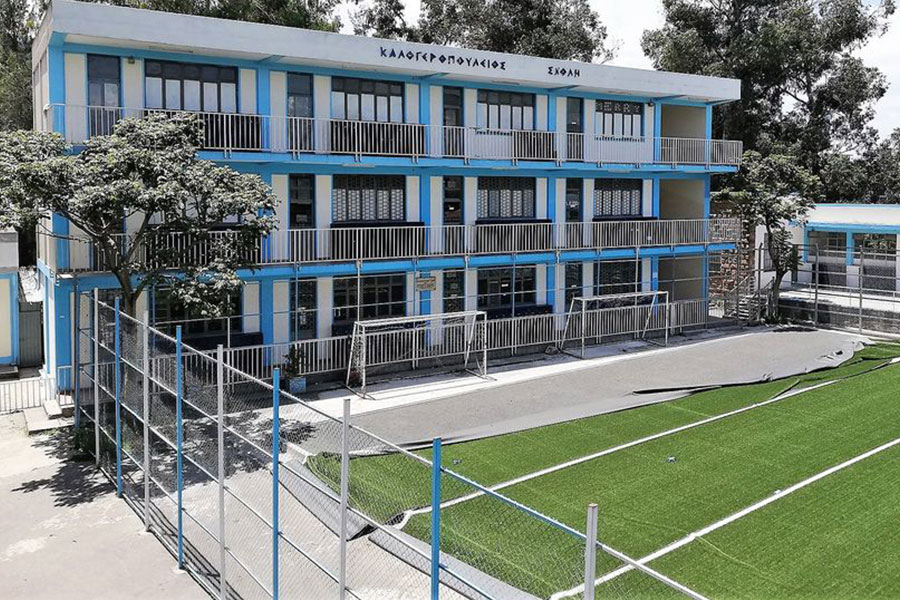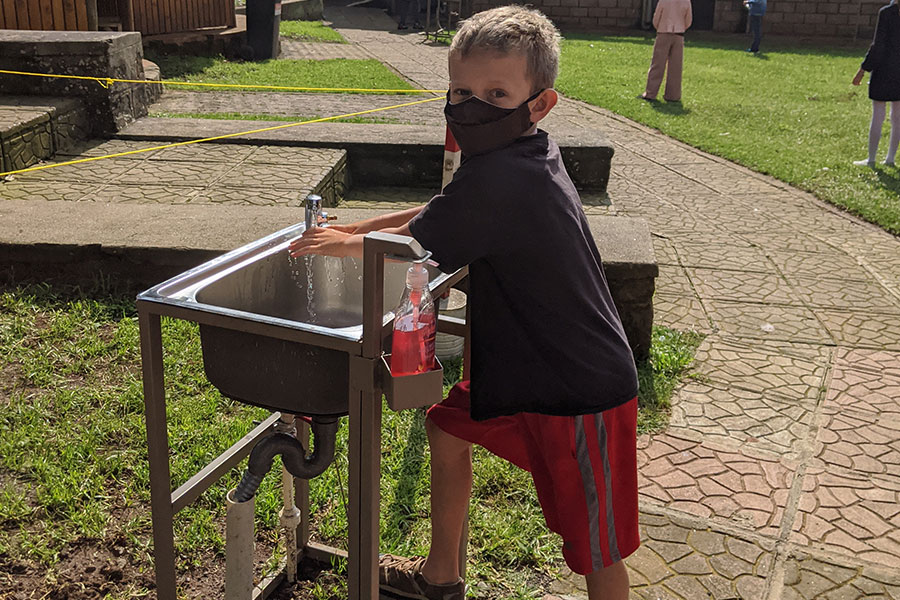
The construction of kitchens and dining halls across primary public schools in the city have been undermined by an absence of considerations for sewage systems. The facilities, under construction since October, are being developed as part of the School Feeding Programme, an initiative funded by the World Bank that aims to keep children in school by providing meals.
A total of 108 out of 118 facilities across different schools face sewage linkage problems that the City Administration is now attempting to solve through the construction of septic tanks. Kitchens and dining halls at nearly 60 schools, built in three months, were inaugurated last week.
Though they were expected to be linked to sewage lines or existing septic tanks at the schools, a team made up of the City's Construction Bureau is now assessing the school sites for adaptation and estimating costs for the construction of septic tanks across the schools.
The construction of the septic tanks for the facilities will require additional funding expected to be sourced from the City Administration or the World Bank, according to Tamrat Estifanos, deputy director at the Food Security & Productive Safety Net Agency.
The facilities, under construction since October, are being developed as part of the School Feeding Programme, an initiative funded by the World Bank that aims to keep children in school by providing meals.
"We're conducting a cost breakdown to determine the cost, as it will differ from one school to the other," said Tamrat.
The plan of connecting the facilities to existing sewage lines had failed for different reasons, according to him. One was the relocation of the spaces allocated for the facilities. Schools undergoing classroom expansions in response to precautionary measures against the Novel Coronavirus (COVID-19) took up space initially earmarked for the kitchens and dining halls. This resulted in shifting the specific areas within the schools or shifting schools altogether.
Survey and adaptation work had to be redone for 31 schools, resulting in additional costs of four million Birr. The total project cost for the construction at onset had been 765 million Br.
In addition to the glaring issue of sewage, the kitchen and dining hall construction also hit multiple unforeseen snags in terms of contractors. Heavier than expected pre-construction site preparation work and price hikes in cement, metal and other construction items are among the issues.
The facilities, under construction since October, are being developed as part of the School Feeding Programme, an initiative funded by the World Bank that aims to keep children in school by providing meals.
Letters of support from the City Administration did not save contractors from the long queues at cement factories, according to Amare Moges, general manager of Amare Moges Building Contractor, undertaking the construction at 20 schools in Bole District for 58.5 million Br.
"The factories said they weren't familiar with this project," he said. "We weren't given priority at all."
Topographical difficulties and a lack of running water at some sites also incurred extra costs for the contractors. Sites located in Gulele District required multiple design modifications in collaboration with consultants hired for the project.
Rushing the implementation of projects is the culprit that makes issues like sewage problems all too common, according to Tilahun Derib (PhD), infrastructure design & construction chair at the Ethiopian Institute of Architecture, Building Construction & City Development at Addis Abeba University.
"We override issues and miss elements otherwise present in proper planning stages," he said.
The options to be tabled in this case require a feasibility study based on different selection criteria such as cost, availability of technology, as well as space, according to him.
"Septic tanks require space," he said. "Even if [the schools] have that space, then they need to be at a lower elevation."
PUBLISHED ON
Feb 20,2021 [ VOL
21 , NO
1086]

Radar | Jul 08,2023

Fortune News | Apr 09,2022

Fortune News | Sep 24,2022

Sunday with Eden | Oct 05,2024

Fortune News | Jun 10,2023

Agenda | Oct 03,2020

My Opinion | Jun 29,2024

Fortune News | Oct 24,2020

Fortune News | Aug 29,2020

Commentaries | Apr 25,2020

Dec 22 , 2024 . By TIZITA SHEWAFERAW
Charged with transforming colossal state-owned enterprises into modern and competitiv...

Aug 18 , 2024 . By AKSAH ITALO
Although predictable Yonas Zerihun's job in the ride-hailing service is not immune to...

Jul 28 , 2024 . By TIZITA SHEWAFERAW
Unhabitual, perhaps too many, Samuel Gebreyohannes, 38, used to occasionally enjoy a couple of beers at breakfast. However, he recently swit...

Jul 13 , 2024 . By AKSAH ITALO
Investors who rely on tractors, trucks, and field vehicles for commuting, transporting commodities, and f...

Jun 28 , 2025
Meseret Damtie, the assertive auditor general, has never been shy about naming names...

Jun 21 , 2025
A well-worn adage says, “Budget is not destiny, but it is direction.” Examining t...

Jun 14 , 2025
Yet again, the Horn of Africa is bracing for trouble. A region already frayed by wars...

Jun 7 , 2025
Few promises shine brighter in Addis Abeba than the pledge of a roof for every family...